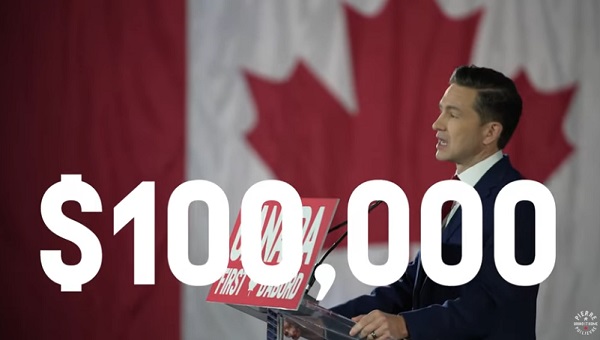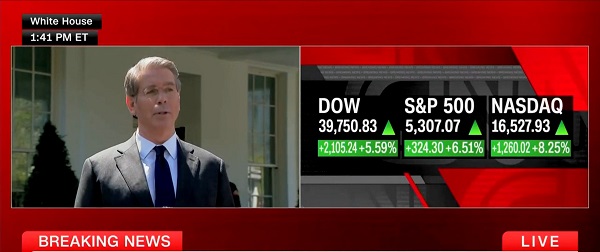Christopher Rufo
In Charleroi, Pennsylvania, the local population grapples with a surge of Haitian migrants.

Charleroi, Pennsylvania, is a deeply troubled place. The former steel town, built along a stretch of the Monongahela River, south of Pittsburgh, has experienced the typical Rust Belt rise and fall. The industrial economy, which had turned it into something resembling a company town, hollowed out after the Second World War. Some residents fled; others succumbed to vices. The steel mills disappeared. Two drug-abuse treatment centers have since opened their doors.
The town’s population had steadily declined since the middle of the twentieth century, with the most recent Census reporting slightly more than 4,000 residents. Then, suddenly, things changed. Local officials estimate that approximately 2,000 predominantly Haitian migrants have moved in. The town’s Belgium Club and Slovak Club are mostly quiet nowadays, while the Haitians and other recent immigrants have quickly established their presence, even dominance, in a dilapidated corridor downtown.
This change—the replacement of the old ethnics with the new ethnics—is an archetypal American story. And, as in the past, it has caused anxieties and, at times, conflict.
The municipal government has felt the strain. The town, already struggling with high rates of poverty and unemployment, has been forced to assimilate thousands of new arrivals. The schools now crowd with new Haitian pupils, and have had to hire translators and English teachers. Some of the old pipes downtown have started releasing the smell of sewage. And, according to a town councilman, there is a growing sense of trepidation about the alarming number of car crashes, with some vehicles reportedly slamming into buildings.
Among the city’s old guard, frustrations are starting to boil over. Instead of being used to revitalize these communities, these residents argue, resources get redirected to the new arrivals, who undercut wages, drive rents up, and, so far, have failed to assimilate. Worst of all, these residents say, they had no choice—there was never a vote on the question of migration; it simply materialized.
Former president Donald Trump, echoing the sentiments of some of Charleroi’s native citizens, has cast the change in a sinister light. As he told the crowd at a recent rally in Indiana, Pennsylvania, “it takes centuries to build the unique character of each state. . . . But reckless migration policy can change it quickly and permanently.” Progressives, as expected, countered with the usual arguments, claiming that Trump was stoking fear, inciting nativist resentment, and even putting the Haitian migrants in danger.
Neither side, however, seems to have grappled with the mechanics of Charleroi’s abrupt transformation. How did thousands of Haitians end up in a tiny borough in Western Pennsylvania? What are they doing there? And cui bono—who benefits?
The answers to these questions have ramifications not only for Charleroi, but for the general trajectory of mass migration under the Biden administration, which has allowed more than 7 million migrants to enter the United States, either illegally, or, as with some 309,000 Haitians, under ad hoc asylum rules.
The basic pattern in Charleroi has been replicated in thousands of cities and towns across America: the federal government has opened the borders to all comers; a web of publicly funded NGOs has facilitated the flow of migrants within the country; local industries have welcomed the arrival of cheap, pliant labor. And, under these enormous pressures, places like Charleroi often revert to an older form: that of the company town, in which an open conspiracy of government, charity, and industry reshapes the society to its advantage—whether the citizens want it or not.
The best way to understand the migrant crisis is to follow the flow of people, money, and power—in other words, to trace the supply chain of human migration. In Charleroi, we have mapped the web of institutions that have facilitated the flow of migrants from Port-au-Prince. Some of these institutions are public and, as such, must make their records available; others, to avoid scrutiny, keep a low profile.
The initial, and most powerful, institution is the federal government. Over the past four years, Customs and Border Patrol has reported hundreds of thousands of encounters with Haitian nationals. In addition, the White House has admitted 210,000 Haitians through its controversial Humanitarian Parole Program for Cubans, Haitians, Nicaraguans, and Venezuelans (CHNV), which it paused in early August and has since relaunched. The program is presented as a “lawful pathway,” but critics, such as vice presidential candidate J. D. Vance, have called it an “abuse of asylum laws” and warned of its destabilizing effects on communities across the country.
The next link in the web is the network of publicly funded NGOs that provide migrants with resources to assist in travel, housing, income, and work. These groups are called “national resettlement agencies,” and serve as the key middleman in the flow of migration. The scale of this effort is astounding. These agencies are affiliated with more than 340 local offices nationwide and have received some $5.5 billion in new awards since 2021. And, because they are technically non-governmental institutions, they are not required to disclose detailed information about their operations.
In Charleroi, one of the most active resettlement agencies is Jewish Family and Community Services Pittsburgh. According to a September Pittsburgh Post-Gazette report, JFCS staff have been traveling to Charleroi weekly for the past year and a half to resettle many of the migrants. The organization has offered to help migrants sign up for welfare programs, including SNAP, Medicaid, and direct financial assistance. While JFCS Pittsburgh offers “employment services“ to migrants, it denies any involvement with the employer and staffing agencies that were the focus of our investigation.
And yet, business is brisk. In 2023, JFCS Pittsburgh reported $12.5 million in revenue, of which $6.15 million came directly from government grants. Much of the remaining funding came from other nonprofits that also get federal funds, such as a $2.8 million grant from its parent organization, HIAS. And JFCS’s executives enjoy generous salaries: the CEO earned $215,590, the CFO $148,601, and the COO $125,218—all subsidized by the taxpayer.
What is next in the chain? Business. In Charleroi, the Haitians are, above all, a new supply of inexpensive labor. A network of staffing agencies and private companies has recruited the migrants to the city’s factories and assembly lines. While some recruitment happens through word-of-mouth, many staffing agencies partner with local nonprofits that specialize in refugee resettlement to find immigrants who need work.
At the center of this system in Charleroi is Fourth Street Foods, a frozen-food supplier with approximately 1,000 employees, most of whom work on the assembly line. In an exclusive interview, Chris Scott, the CEO and COO of Fourth Street Barbeque (the legal name of the firm that does business as Fourth Street Foods) explained that his company, like many factory businesses, has long relied on immigrant labor, which, he estimates, makes up about 70 percent of its workforce. The firm employs many temporary workers, and, with the arrival of the Haitians, has found a new group of laborers willing to work long days in an industrial freezer, starting at about $12 an hour.
Many of these workers are not directly employed by Fourth Street Foods. Instead, according to Scott, they are hired through staffing agencies, which pay workers about $12 an hour for entry-level food-processing roles and bill Fourth Street Foods over $16 per hour to cover their costs, including transportation and overhead. (The average wage for an entry-level food processor in Washington County was $16.42 per hour in 2023.)
According to a Haitian migrant who worked at Fourth Street and a review of video footage, three staffing agencies—Wellington Staffing Agency, Celebes Staffing Services, and Advantage Staffing Agency—are key conduits for labor in the city. None have websites, advertise their services, or appear in job listings. According to Scott, Fourth Street Foods relies on agencies to staff its contract workforce, but he declined to specify which agencies, citing nondisclosure agreements.
The final link is housing. And here, too, Fourth Street Foods has an organized interest. During the Covid-19 pandemic, Scott said, Fourth Street Foods was “scrambling” to find additional workers. The owner of the company, David Barbe, stepped in, acquiring and renovating a “significant number of homes” to provide housing for his workforce. A property search for David Barbe and his other business, DB Rentals LLC, shows records of more than 50 properties, many of which are concentrated on the same streets.
After the initial purchases, Barbe required some of the existing residents to vacate to make room for newcomers. A single father, who spoke on condition of anonymity, was forced to leave his home after it was sold to DB Rentals LLC in 2021. “[W]e had to move out [on] very short notice after five years of living there and being great tenants,” he explained. Afterward, a neighbor informed him that a dozen people of Asian descent had been crammed into the two-bedroom home. They were “getting picked up and dropped off in vans.”
“My kids were super upset because that was the house they grew up in since they were little,” the man said. “It was just all a huge nightmare.”
In recent years, a debate has raged about “replacement migration,” which some left-wing critics have dubbed a racist conspiracy theory. But in Charleroi, “replacement” is a plain reality. While the demographic statistics have shifted dramatically in recent years, replacement happens in more prosaic ways, too: a resident moves away. Another arrives. The keys to a rental apartment change hands.
In one sense, this is unremarkable. Since the beginning, America has been the land of migration, replacement, and change. The original Belgian settlers of Charleroi were replaced by the later-arriving Slavic populations, who are now, in turn, being replaced by men and women from Port-au-Prince. The economy changed along the same lines. The steel plants shut down years ago. The glass factory, the last remaining symbol of the Belgian glass-makers, might suspend operations soon. The largest employer now produces frozen meals.
In another sense, however, legitimate criticisms can be made of what is happening in Charleroi. First, the benefits of mass migration seem to accrue to the organized interests, while citizens and taxpayers absorb the costs. No doubt, the situation is advantageous to David Barbe of Fourth Street Foods, who can pay $16 an hour to the agencies that employ his contract labor force, then recapture some of those wages in rent—just like the company towns from a century ago.
But for the old residents of Charleroi, who cherish their distinct heritage and fear that their quality of life is being compromised, it’s mostly downside. The evictions, the undercut wages, the car crashes, the cramped quarters, the unfamiliar culture: these are not trivialities, nor are they racist conspiracy theories. They are the signs of a disconcerting reality: Charleroi is a dying town that could not revitalize itself on its own, which made it the perfect target for “revitalization” by elite powers—the federal government, the NGOs, and their local satraps.
The key question in Charleroi is the fundamental question of politics: Who decides? The citizens of the United States, and of Charleroi, have been assured since birth that they are the ultimate sovereign. The government, they were told, must earn the consent of the governed. But the people of Charleroi were never asked if they wanted to submit their borough to an experiment in mass migration. Others chose for them—and slandered them when they objected.
The decisive factor, which many on the institutional Left would rather conceal, is one of power. Martha’s Vineyard, when faced with a single planeload of migrants, can evict them in a flash. But Charleroi—the broken man of the Rust Belt—cannot. This is the reality of replacement: the strong do what they can, and the weak endure what they must.
Christopher Rufo is a reader-supported publication. To receive new posts and support my work, consider becoming a free or paid subscriber.
Automotive
Trump Must Act to Halt the Tesla Terror Campaign

 Christopher F. Rufo
Christopher F. Rufo
The Left’s splintering violence threatens a veto over democratic power.
Elon Musk finds himself at the fulcrum of American life. His companies are leading the field across the automotive, space, robotics, and AI industries. His ownership of the social platform X gives him significant influence over political discourse. And his DOGE initiative represents the single greatest threat to the permanent administrative state. Musk is arguably the most powerful man in the United States, including President Trump.
The Left has taken notice. Left-wing activists have long practiced a tactic called “power mapping,” which entails diagramming the opposing political movement and identifying “chokepoints.” They have designated Musk as one such chokepoint. This month, activists claimed to have organized 500 protests against Elon Musk’s Tesla—dubbed the “Tesla Takedown”—with demonstrations outside sales lots and a series of incidents of vandalism, property destruction, and fire bombings. A pattern has also emerged of individuals scratching or spray-painting parked Teslas, looking to intimidate owners and potential owners or just to express hatred of Musk.
Precedents exist for this kind of escalation. In the 1970s, following the frustrations of the civil rights era, left-wing splinter groups launched targeted terror campaigns and symbolic acts of violence. They bombed the U.S. Capitol, assassinated police officers, and even self-immolated in imitation of Buddhist monks. We may be entering a similar phase today, as the collapse of the Black Lives Matter movement gives rise to radicalized left-wing factions willing to embrace violence. If so, Musk’s Tesla may be the Number One target.
What, exactly, motivates this campaign? At its core, the Left appears to be shifting from an “antiracist” narrative to an anti-wealth one—from a racial frame to an economic one. The sentiment driving the Tesla Takedown is rooted in economic resentment and a desire for leveling. Musk has become a symbol of everything progressives oppose: oligarchy, capitalism, wealth, and innovation. These, in their view, are marks of the oppressor. They scorn the futuristic Cybertruck, SpaceX rockets, and Optimus robots, believing that such creations should be dismantled and repurposed into chassis for public buses or I-beams for public housing.
A certain element of left-wing Luddism is at work here, but the greater part of these activists’ motives is resentment. Musk represents the triumph of the great man of industry, something the Left believes should not exist.
Unfortunately, the Tesla Takedown may succeed. The Left has likely identified Tesla as a chokepoint because it’s easier to dissuade consumers from buying a car they associate with a malevolent political cause—or fear might be vandalized—than it is to persuade them to buy one in support of Musk and DOGE. When it comes to purchasing a Tesla, fear among the average American is a more powerful motivator than enthusiasm among the MAGA base.
Some evidence suggests that the campaign has made an economic impact. Tesla stock peaked around the time of President Trump’s inauguration and since then has lost approximately 40 percent of its value. Musk has accumulated more power than any other American, but that means that he has more points of vulnerability. His wealth and power are tied to his companies—most importantly, his consumer car company, which depends on individual purchases rather than institutional contracts (like SpaceX).
Trump has signaled that he understands this dilemma. He appeared at the White House in a Tesla and has voiced support for Musk’s firms. Justice Department prosecutors—and their allies in state government—must translate this support into policy by identifying and punishing those who destroy property as a means of political intimidation.
The administration needs to make clear that radical left-wing factions cannot use violence to wield a veto over democratic governance. If the partnership between Trump and Musk is to produce meaningful results, it must be backed by the full protection of the law.
Business
The NSA’s Secret Sex Chats

|
|
Intelligence officials maintained a chatroom to discuss polyamory and transgender surgeries, internal documents reveal.
The “intelligence community” is one of the most powerful parts of the American national security apparatus. In theory, it works tirelessly to keep the nation safe. But according to internal documents that we obtained, some intelligence agency employees have another on-the-job priority: sex chats.
We have cultivated sources within the National Security Agency—one current employee and one former employee—who have provided chat logs from the NSA’s Intelink messaging program. According to an NSA press official, “All NSA employees sign agreements stating that publishing non-mission related material on Intelink is a usage violation and will result in disciplinary action.” Nonetheless, these logs, dating back two years, are lurid, featuring wide-ranging discussions of sex, kink, polyamory, and castration.
One popular chat topic was male-to-female transgender surgery, which involves surgically removing the penis and turning it into an artificial vagina. “[M]ine is everything,” said one male who claimed to have had gender reconstruction surgery. “[I]’ve found that i like being penetrated (never liked it before GRS), but all the rest is just as important as well.” Another intelligence official boasted that genital surgery allowed him “to wear leggings or bikinis without having to wear a gaff under it.”
These employees discussed hair removal, estrogen injections, and the experience of sexual pleasure post-castration. “[G]etting my butthole zapped by a laser was . . . shocking,” said one transgender-identifying intel employee who spent thousands on hair removal. “Look, I just enjoy helping other people experience boobs,” said another about estrogen treatments. “[O]ne of the weirdest things that gives me euphoria is when i pee, i don’t have to push anything down to make sure it aims right,” a Defense Intelligence Agency employee added.
These revelations come at a moment of heightened scrutiny for the intelligence community. President Donald Trump, Defense Secretary Pete Hegseth, and Director of National Intelligence Tulsi Gabbard have each made the case that the intelligence agencies have gone “woke,” prioritizing left-wing activism over national security. These chat logs confirm their suspicions and raise fundamental questions about competence and professionalism.
According to our sources, the sex chats were legitimized as part of the NSA’s commitment to “diversity, equity and inclusion.” Activists within the agency used LGBTQ+ “employee resource groups” to turn their kinks and pathologies into official work duties. According to the current NSA employee, these groups “spent all day” recruiting activists and holding meetings with titles such as “Privilege,” “Ally Awareness,” “Pride,” and “Transgender Community Inclusion.” And they did so with the full support of NSA leadership, which declared that DEI was “not only mission critical, but mission imperative.”
In this case, “diversity” was not a byword for racialism, but rather a euphemism for sex talk. Last January, chatroom members discussed their practice of polyamory, or “ethical non-monogamy.” “[A] polycule is a polyamorous group,” one employee explained. “A is my [girlfriend], and B-G are her partners. . . . then B&C are dating but not C&D, nor E, F, or G with any of the others, though there are several MWB (metas-with-benefits) connections.” Another employee claimed to be part of a nine-member “polycule,” adding that “some of our friends are practically poly-mers, with all the connected compounds.”
At other times, the conversations became explicit. The active source at the NSA claimed to have witnessed hundreds of sexually provocative discussions, which, he added, occurred mostly on taxpayer time. The former NSA source who was familiar with the chats recalled being “disgusted” by a particularly shocking thread discussing weekend “gangbangs.”
The NSA sources also raised the question of some staffers’ mental fitness for the job. In one chat, an NSA employee insists on using “it” pronouns in lieu of the human “he” or “she” pronouns. “[I]t/its user here. While I understand we can make some people uncomfortable, keep in mind that the dehumanizing aspect either a) doesn’t apply or b) is a positive effect when we’re requesting it.” A commenter who disagreed was quickly dismissed by employees of the NSA and CIA, who claimed that refusing to use “it/its” pronouns amounted to “erasing” a transgender identity.
“These are folks with top secret clearances believing they are an IT!” said the NSA source.
With the Trump administration taking over, we may see changes. The NSA source said that staffers involved in employee resource groups fear the end of DEI. “[T]here are legal restrictions in place, but this admin has shown they don’t give a f**k about legality,” a staffer in space intelligence remarked about DEI staffers being placed on leave. Others have expressed opposition to Trump’s cabinet nominees.
A conflict is coming. These NSA chat logs suggest the presence of at least hundreds of gender activists within the intelligence services who cannot distinguish between male and female, and who believe that discussing castration, polyamory, and “gangbangs” is an appropriate use of public resources. For psychological and ideological reasons, these kinds of people will not be easily sidelined. The Trump administration should not only dismantle the structure of DEI but also terminate the employees who use it to advance gender activism at the expense of national security.
 |
A guest post by
|
-

 2025 Federal Election2 days ago
2025 Federal Election2 days agoRCMP memo warns of Chinese interference on Canadian university campuses to affect election
-

 2025 Federal Election1 day ago
2025 Federal Election1 day agoResearchers Link China’s Intelligence and Elite Influence Arms to B.C. Government, Liberal Party, and Trudeau-Appointed Senator
-

 Business2 days ago
Business2 days agoTrump raises China tariffs to 125%, announces 90-day pause for countries who’ve reached out to negotiate
-

 2025 Federal Election2 days ago
2025 Federal Election2 days agoThe status quo in Canadian politics isn’t sustainable for national unity
-

 2025 Federal Election1 day ago
2025 Federal Election1 day agoPoilievre Announces Plan To Cut Taxes By $100,000 Per Home
-

 Business2 days ago
Business2 days agoScott Bessent Says Trump’s Goal Was Always To Get Trading Partners To Table After Major Pause Announcement
-

 2025 Federal Election1 day ago
2025 Federal Election1 day agoTwo Canadian police unions endorse Pierre Poilievre for PM
-

 2025 Federal Election22 hours ago
2025 Federal Election22 hours agoCarney needs to cancel gun ban and buyback









